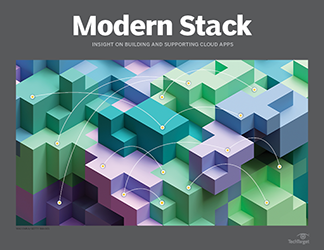PRO+ Premium Content/Modern Stack
Access your Pro+ Content below.
Service mesh architecture radicalizes container networking

This article is part of the Modern Stack issue of June 2018, Vol. 1, No. 2
Containers and microservices have given rise to a new network architecture paradigm called service mesh, but IT industry watchers disagree about whether it'll see widespread enterprise use. A service mesh architecture uses a proxy called a sidecar container attached to every application container, VM or container orchestration pod, depending on the type of service mesh in use. This proxy can then attach to centralized control plane software, which gathers fine-grained network telemetry data, applies network management policies or proxy configuration changes, and establishes and enforces network security policies. It's still early days for the service mesh architecture in IT systems, but, as with containers, its rise to prominence has been rapid. At the Cloud Native Computing Foundation's (CNCF's) KubeCon and CloudNativeCon in December 2017, service mesh had already bypassed containers as the hottest topic of conversation among cutting-edge DevOps shops. "We often find ourselves wanting to build application software, but what ...
Features in this issue
-
Service mesh architecture radicalizes container networking
Containerization is the IT industry's favorite superhero, so it's only fitting that containers have a powerful sidekick in service mesh. Together, they fight network management chaos.
-
Cloud applications demand a new IT operations strategy
Business and software development trends are putting more pressure on IT operations staff and changing the way teams deploy applications.
Columns in this issue
-
Don't overestimate the benefits of serverless computing
It's natural to be curious about new technologies, but the hype around serverless computing far outweighs its practical advantages.
-
Emerging PaaS model puts cloud app dev into the fast lane
As they grapple with application backlogs and a shortage of seasoned, business-savvy developers, enterprises will increasingly look to drag-and-drop programming options.
